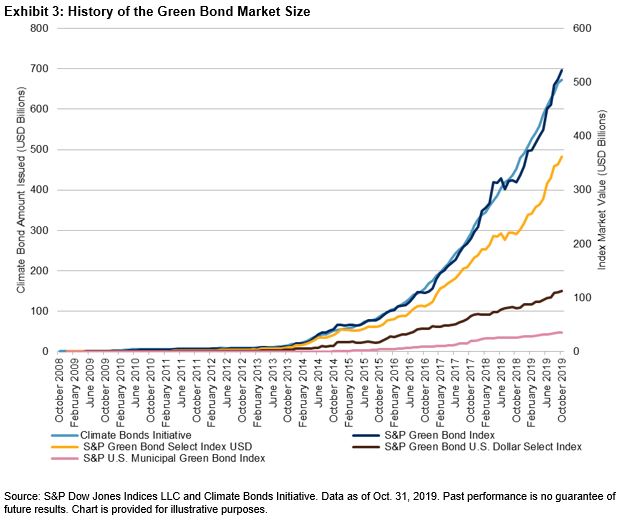Given the current market conditions, the popularity of strategies that rotate between factors or sectors, providing agility in their allocations with the goal of capturing outperformance in changing economic regimes, has increased considerably. One of these strategies is the S&P 500® Sector Rotator Daily RC2 5% Index. The index rotates between the top three sectors that have the highest relative value and highest short-term momentum. The index also has a risk control overlay with a daily target volatility of 5%.
The sector rotation component of the S&P 500 Sector Rotator Daily RC2 5% Index is crucial to its performance. We can see that, historically, there has been a diverse representation of sectors in the index (see Exhibit 1). The sector allocation rebalances every six months to capture potential changes in the sectors relative to their peers or in the macroeconomic environment. For example, the S&P 500 Sector Rotator Daily RC2 5% Index is currently allocated to Materials, Industrials, and Real Estate—sectors that traditionally outperform in the early to late expansion phases of the business cycle.

With respect to risk control, the S&P 500 Sector Rotator Daily RC2 5% Index uses the S&P 500, the S&P 10-Year U.S. Treasury Note Futures Index, and cash to target a volatility of 5% and protect the index against significant drawdowns. Exhibit 2 shows that the S&P 500 Sector Rotator Daily RC2 5% Index had varying amounts of exposure to equities, bonds, and cash in the studied period from June 2006 to October 2019. From October 2018 to October 2019, the index was allocated to equities and bonds, with the average equity exposure at 37.9% and average bond exposure at 62.1%. This high bond exposure was due to higher volatility in the equities market, which pushed the risk control to move toward less-volatile assets. When both equity and bond volatilities are high, the index allocates to cash, which is what occurred during the recession from 2007 to 2009.

In Exhibit 3, we can see that the index outperformed comparable strategies in terms of annualized and risk-adjusted returns. The S&P 500 Sector Rotator Daily RC2 5% Index demonstrated superior performance in the short and long term relative to the strategies that use either cash only or the S&P U.S. Treasury Bond Current 5-Year Index in terms of risk control. Having the sector rotation component built into the index is significant considering that the S&P 500 Daily Risk Control 5% Index, which does not use sector rotation, underperformed the other indices in our analysis. When compared with indices that use both sector rotation and risk control, such as the S&P 500 Sector Rotator Daily RC2 5% (5Yr Treasury) Index or the S&P 500 Sector Rotator Daily Risk Control 5% Index, we could attribute the higher performance of the S&P 500 Sector Rotator Daily RC2 5% Index to its allocation to the 10-Year Treasury. This could be due to the yield curve volatility in the shorter end of the curve in March 2019 and May 2019 and potential fears of a recession hindering the performance of the 5-Year Treasury.

Overall, the S&P 500 Sector Rotator Daily RC2 5% Index is designed to successfully capture the performance of sectors that achieve higher returns in different phases of the economic cycle and the risk control overlay effectively manages the volatility of the index.
The posts on this blog are opinions, not advice. Please read our Disclaimers.























































